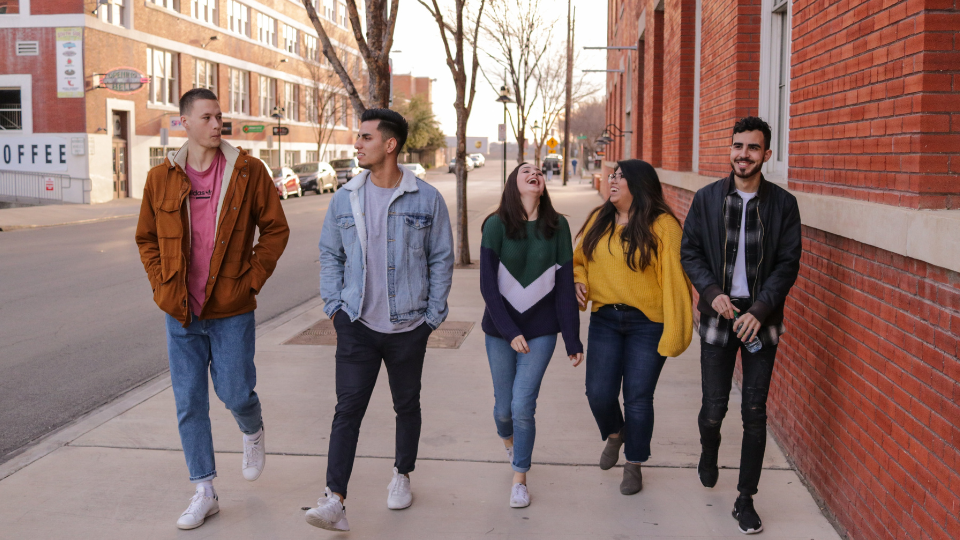Opioid Facts for Youth

What are Opioids and Why are They Deadly?
Opioids are powerful drugs that come as prescription medicines (oxycodone, codeine, and morphine) or illicit drugs (heroin) (National Institute on Drug Abuse, n.d.-c). Doctors often pre-scribe these drugs to people who are experiencing moderate to severe pain. In addition to con-trolling pain, opioids can make some people feel relaxed, happy, or “high” and can be addictive (Johns Hopkins Medicine, n.d.). An addiction to opioids is called an opioid use disorder (OUD). Like many drugs, opioids require an increased amount to feel the same effect. This can lead to accidental overdose deaths and other harmful outcomes. Addiction can lead to you losing your job, hurting your relationships, and missing things that matter in your life. Opioids affect not only the reward system of the brain, they also impact breathing. Taken at higher doses, opioids can make it hard to breathe, making the overdose fatal when breathing stops (National Institute on Drug Abuse, n.d.-b).
Opioid Definition:
Opioids are compounds resembling opium in addictive properties or physiological effects. Opioids are a class of drugs that include the illegal drug heroin, synthetic opioids such as fentanyl, and pain relievers avail-able legally by prescription, such as oxycodone (OxyContin®), hydroco-done (Vicodin®), codeine, morphine, and others. Find more information at https://www.drugabuse.gov/drug-topics/opioids.
What are the risks of opioid use?
Opioids can restrict your ability to breathe when misused or taken at a high dose and can lead to a fatal overdose. The risk of re-spiratory depression (slowing or even stop-ping your breathing), increases if you have never taken an opioid before or if you are taking other medications/drugs that interact with the opioid.
Reasons Teens Misuse Opioids
Teens can misuse opioids for a variety of reasons, such as the following:
- Negative coping strategy (self-medicating).
- Escape from problems rather than facing them.
- Pressure to fit in.
- Lack of confidence (self-worth).
- Lack of good information.
- Lack of information on consequences.
- Act of rebellion.

What do the stats for youth OUD and SUD show?
In Utah, 19,000 (6%) of those 12 to 17 years old used an illicit drug in the last month. In the last month, 104,000 of those 18 to 25 years old used drugs. Total overdose deaths: 4,777 (15 to 24 years old). Good news: Teenagers in Utah are 28.16% less likely to have used drugs in the last month than the average American teen (see https://drugabusestatistics.org/teen-drug-use/).
What can you lose when you use?
Misusing opioids can lead to losing your ability to make good decisions, friends and relation-ships, your health, and possibly your life.
What are the dangers of opioid use?
Regular use of these drugs can increase your tolerance and dependence, requiring higher and more frequent doses. In some cases, longer terms of opioid use can lead to addiction or opioid use disorder (OUD) or substance use disorder (SUD).
What are some street names for opioids?
Street names include happy pills, OC, oxy, oxycotton, percs, vikes, fentanyl (a synthet-ic opioid 50–100 times more potent than morphine).
What are the effects of using opioids?
Opioids can make some people feel relaxed, happy, or “high,” and can be addictive. Additional side effects can include slowed breathing, constipation, nausea, confusion, and drowsiness (see https://www.hopkins-medicine.org/opioids/what-are-opioids.html).
Is there a reason to use opioids?
YES! Use opioids when your doctor prescribes them for a short period of time (3–7 days) to manage severe pain after surgery or a broken bone, and after a discussion of other options, including the benefits and risks of opioid use. In addition, this practice helps to reduce the pos-sibility of becoming addicted or dependent on opioids. If you and your doctor decide you need opioids to manage severe pain, work with your doctor to take the lowest dose possible, for the shortest time needed, exactly as prescribed.
Ways to Help and Support Peers
Being a positive influence for your friends and peers can make a big difference in their decision to not misuse opioids and other substances. The following are some ways that you can safe-guard yourself and your peers against substance misuse:
- Give alternate options for acceptance and bonding.
- Speak up.
- Provide resources.
- Listen and be supportive to those struggling with life (stressors).
- Make the decision not to use before you are faced with the situation.
- Develop a strong friendship with peers and trusted adults.
- Share the USU Extension Youth Opioid Prevention Posters with your peers.
Resources
Educating Yourself
- Drug facts: https://teens.drugabuse.gov/drug-facts/drug-overdoses-youth
- Opioid drug abuse information from the National Institute on Drug Abuse: https://www.drugabuse.gov/drug-topics/opioid
- Games, articles, and videos on teen drug use and the brain from the National Insti-tute on Drug Abuse: https://teens.drug-abuse.gov/teens
Finding Treatment
- Substance Abuse Mental Health Services Administration (SAMHSA) Opioid Treatment Program Directory: https://dpt2.samhsa.gov/treatment/directory.aspx
- Treatment resources: https://www.samhsa.gov/find-treatment
- Youth and young adults resources from SAMHSA: https://www.samhsa.gov/brss-tacs/recovery-support-tools/youth-young-adults
References
- Ahmad, F. B., Rossen L. M., & Sutton P. (2021). Provisional drug overdose death counts. National Center for Health Statistics. Retrieved August 1, 2021, from https://www.cdc.gov/nchs/nvss/vsrr/drug-overdose-data.htm.
- Johns Hopkins Medicine (n.d.). What are opioids? Retrieved on April 27, 2021, from https://www.hopkinsmedicine.org/opioids/what-are-opioids.html.
- National Institute on Drug Abuse (n.d.-a). Drug overdoses in youth. National Institutes of Health, U.S. Department of Health and Human Services. Retrieved on May 24, 2021, from https://teens.drugabuse.gov/drug-facts/drug-over-doses-youth.
- National Institute on Drug Abuse (n.d.-b). Drug facts. National Institutes of Health, U.S. Department of Health and Human Services. Retrieved on July 14, 2021, from https://teens.drugabuse.gov/teens/drug-facts.
- National Institute on Drug Abuse (n.d.-c). Prescription drugs. National Institutes of Health. Retrieved December 24, 2019, from https://teens.drugabuse.gov/drug-facts/prescription-drugs.
Utah State University Extension
Peer-reviewed fact sheet
Download PDF
Authors
Tim Keady, Stacey MacArthur, Gabriela Murza,a nd Suzanne Prevedel
Related Research





